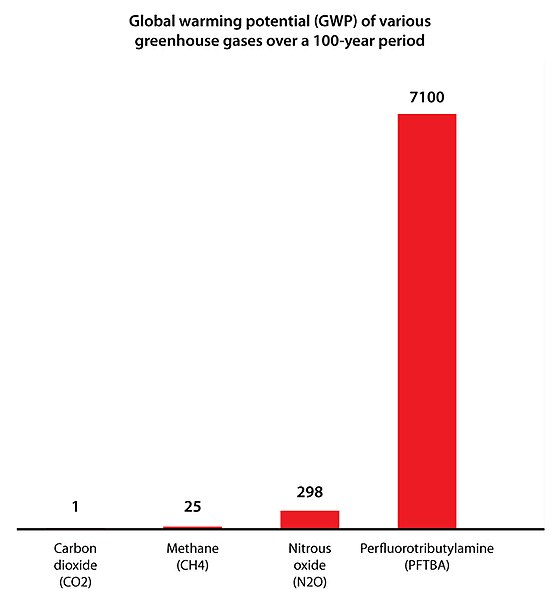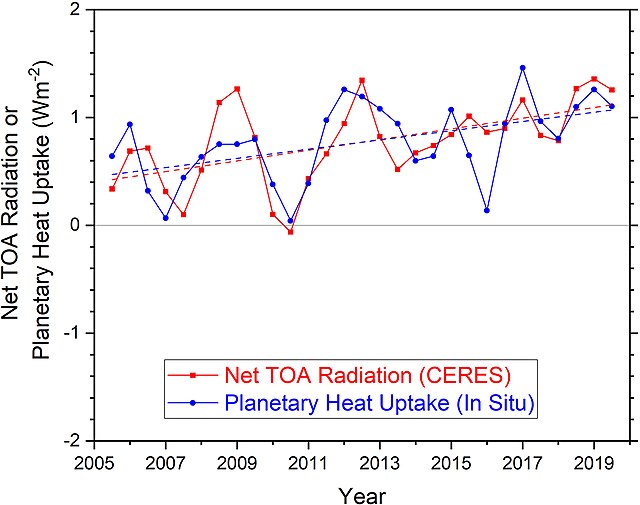Greenhouse gases (GHGs) are the gases in the atmosphere that raise the surface temperature of planets such as the Earth. What distinguishes them from other gases is that they absorb the wavelengths of radiation that a planet emits, resulting in the greenhouse effect. The Earth is warmed by sunlight, causing its surface to radiate heat, which is then mostly absorbed by greenhouse gases. Without greenhouse gases in the atmosphere, the average temperature of Earth's surface would be about −18 °C (0 °F), rather than the present average of 15 °C (59 °F).
Comparison of global warming potential (GWP) of three greenhouse gases over a 100-year period: Perfluorotributylamine, nitrous oxide, methane and carbon dioxide (the latter is the reference value, therefore it has a GWP of one)
This 1912 article succinctly describes how burning coal creates carbon dioxide that causes climate change.
Outgoing longwave radiation
In climate science, longwave radiation (LWR) is electromagnetic thermal radiation emitted by Earth's surface, atmosphere, and clouds. It may also be referred to as terrestrial radiation. This radiation is in the infrared portion of the spectrum, but is distinct from the shortwave (SW) near-infrared radiation found in sunlight.
The growth in Earth's energy imbalance from satellite and in situ measurements (2005–2019). A rate of +1.0 W/m2 summed over the planet's surface equates to a continuous heat uptake of about 500 terawatts (~0.3% of the incident solar radiation).



